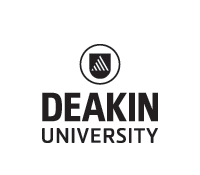Bachelor of Health Sciences/Bachelor of Arts
2017 Deakin University Handbook
| Year | 2017 course information |
|---|---|
| Award granted | Bachelor of Health Sciences/Bachelor of Arts |
| Course Map | This course map is for new students commencing from 2017. If you require a course map from a previous year, please contact a Student Adviser. |
| Campus | Offered at Burwood (Melbourne), Online |
| Cloud Campus | Yes |
| Duration | 4 years full-time or part-time equivalent |
| CRICOS course code | 035503K Burwood (Melbourne) |
| Deakin course code | D391 |
| Approval status | This course is approved by the University under the Higher Education Standards Framework. |
| Australian Quality Framework (AQF) recognition | The award conferred upon completion is recognised in the Australian Qualifications Framework at Level 7. |
Course sub-headings
- Course overview
- Indicative student workload
- Fees and charges
- Course Learning Outcomes
- Course rules
- Work experience
Course overview
This flexible, well-rounded combined degree lets you choose your course structure so that you can find a special niche that reflects your individual passions and interests. Careers might include those in policy, health education or health/wellness media.
Choose from health majors such as environmental health, exercise science, food studies, psychology and sport coaching. Arts majors include politics and policy, public relations, journalism, gender studies and film and television.
With a wide range of study areas available, you can tailor your course to tap into your unique interests and career aspirations. You could combine politics and policy studies with nutrition for careers in health policy, combine sport coaching with media and communication and become a sports commentator, or match food studies with journalism to become a food blogger or restaurant reviewer.
Depending on the study areas you choose in the Health Sciences component, you may qualify to work in areas such as health promotion, community health, project management, program planning, family and community support, housing services, sports psychology, sports nutrition and sports development.
An Arts degree can open doors to careers in international relations, journalism, advertising, public relations, policy development, research, community services, sociology, community development, and visual arts.
Holding a degree in both disciplines means that you can pursue careers where the two overlap. These might include roles in sports and health media, food writing, community health education, public relations for health or food companies, health research or coordinating community arts projects.
Indicative student workload
As a student in the Faculty of Health you can expect to participate in a range of teaching activities each week. This could include classes, seminars, practicals and online interaction. You can refer to the individual unit details in the course structure for more information. You will also need to study and complete assessment tasks in your own time.
Fees and charges
Fees and charges vary depending on your course, your fee category and the year you started. To find out about the fees and charges that apply to you, visit the Current students fees website.
Course Learning Outcomes
See course entry for Bachelor of Health Sciences (H300) or Bachelor of Arts (A300)
Course rules
To complete the Bachelor of Health Sciences/Bachelor of Arts students must attain 32 credit points. Most units (think of units as 'subjects') are equal to 1 credit point. In order to gain 32 credit points you will need to study 32 units (AKA 'subjects') over your entire degree. Most students choose to study 4 units per trimester and usually undertake two trimesters each year.
You must fulfil the requirements of each of the two degrees in your course of study.
The course comprises a total of 32 credit points which must include:
- 16 credit points from the Bachelor of Health Sciences
- 16 credit points from the Bachelor of Arts
- 6 core units from the Bachelor of Health Sciences
- 1 major sequence and 1 minor sequence of study as described under course H300 Bachelor of Health Sciences.
- Either two major sequences (8 credit points each) or one major sequence (8 credit points) and one minor sequence (4 credit points) as described under course A300 Bachelor of Arts.
See course entry for Bachelor of Health Sciences (H300) or Bachelor of Arts (A300)
Work experience
Work-Integrated Learning
A core unit at third-year level, based on inter-professional learning (IPL), provides students the opportunity to draw together their cross-disciplinary learning to demonstrate the knowledge and the skills they have acquired throughout the course and apply them to real-world issues. HSH324 Integrated Learning for Practice involves interdisciplinary teams working to develop responses to real-world problems for presentation to a professional audience.
